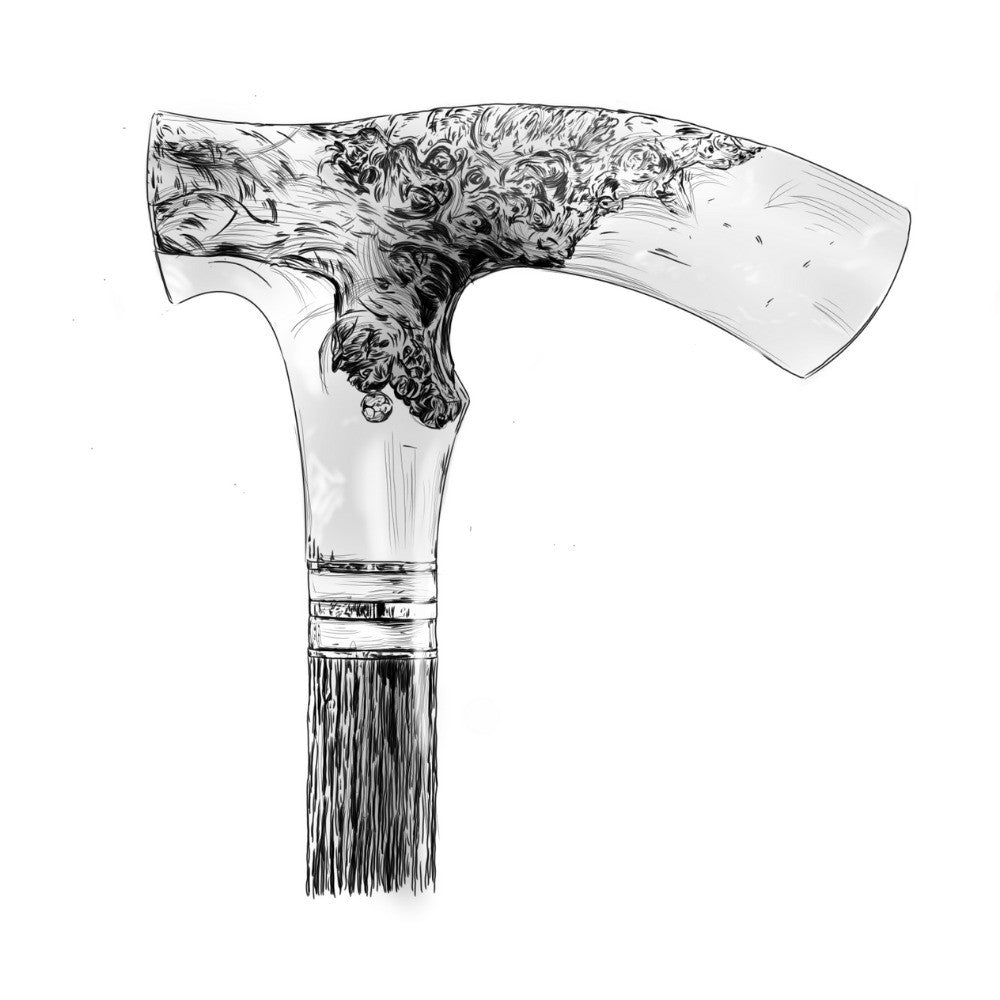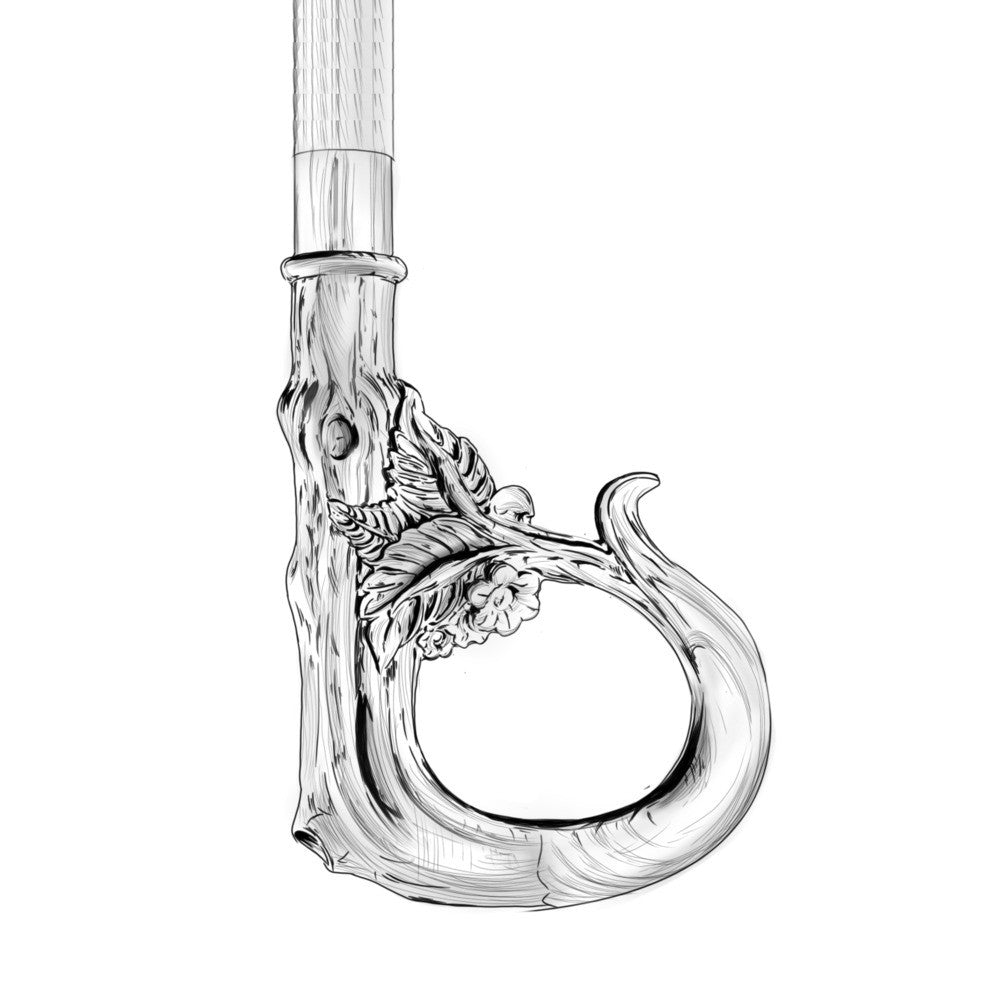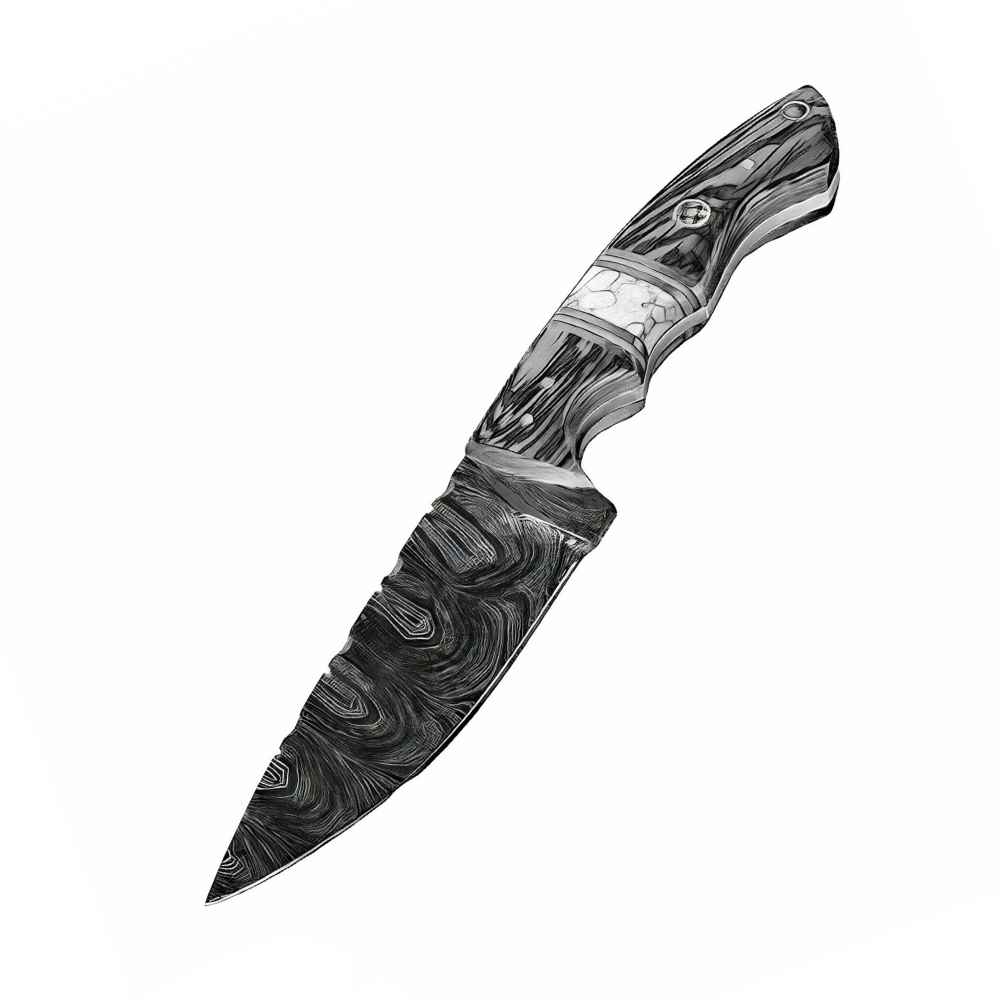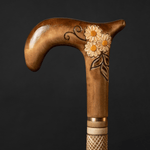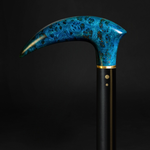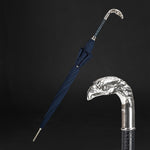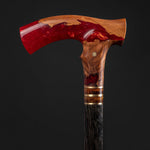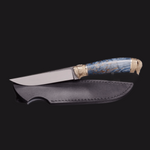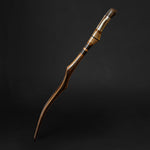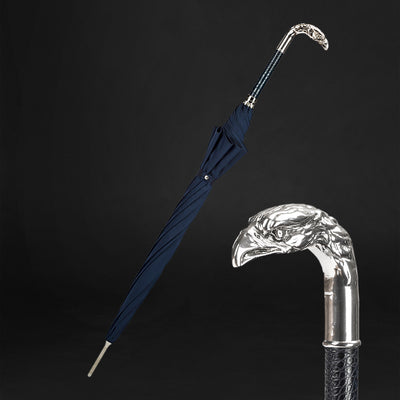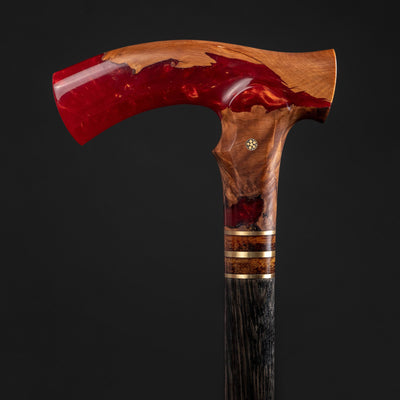You have no items in your shopping cart.
Recent Posts
-
How an Ergonomic Walking Cane Handle Prevents Hand and Wrist Strain?
-
How to Walk With a Cane Correctly to Avoid Back or Shoulder Strain?
-
5 Common Mistakes People Make When Buying a Walking Cane (and How to Avoid Them)
-
How to Choose a Walking Cane That Reflects Your Personality (Not Just Your Needs)?
-
Walking Canes That Match Formalwear for Weddings and Events
-
Why Walking Canes Are the New Fashion Statement?
MOST POPULAR NOW
16
Aug
Walking sticks, often regarded as mere functional aids, possess an unparalleled charm that transcends time and culture. These accessories not only serve as reliable support during walks but also hold immense significance in terms of self-expression and historical narratives. In this comprehensive article, we delve into the captivating world of walking sticks, exploring their importance in self-expression and their rich historical background. With a blend of intricate details and vivid insights, we aim to shed light on the allure that these seemingly mundane accessories bring to our lives.
The psychology of walking sticks: boosting confidence and style
The importance of accessories in self-expression
Accessories have long been considered the silent language of fashion, allowing individuals to communicate their personal style, preferences, and even their emotions without uttering a word. Among these accessories, walking sticks stand out as a sophisticated and versatile choice. Walking sticks are not just functional aids for mobility; they are extensions of one's personality and a medium through which one can convey elegance, confidence, and refinement.
In an era where appearances often speak volumes, a carefully selected walking stick can become a fashion statement that reflects the individual's taste and character. Whether it's a classic wooden cane exuding timeless charm or a contemporary, artistically designed stick showcasing creativity, the right walking stick can enhance one's aura and leave a lasting impression.

Historical significance of walking sticks
The history of walking sticks is steeped in cultural and historical significance, spanning centuries and continents. From ancient Egypt to Victorian England, these accessories have adorned the hands of pharaohs, kings, and gentlemen alike, each stick narrating a unique story of its time.
In the medieval period, walking sticks served not only as symbols of authority and prestige but also as practical tools for navigating uneven terrain. Knights, nobles, and scholars utilized ornately carved sticks as both fashion statements and utilitarian aids, showcasing their status and refinement.
Fast forward to the Victorian era, and walking sticks experienced a renaissance of sorts. This period witnessed an explosion of creativity in stick designs, from concealed weaponry for protection to intricate handles made from exotic materials. These sticks embodied the essence of the era's opulence and social values.
Crafting elegance: the art of walking stick design
Walking stick craftsmanship is an art that demands precision, creativity, and an appreciation for aesthetics. Master artisans meticulously select materials, combining wood, metals, and embellishments to create visually stunning and functional pieces of art. The handles, often the focal point of these accessories, can range from classic knobs to intricate sculptures representing animals, mythological figures, or abstract forms.
Moreover, the integration of technology and innovation has given rise to modern walking stick designs that cater to a contemporary lifestyle. Ergonomic grips, adjustable heights, and even built-in technologies have transformed these accessories into modern marvels that seamlessly merge tradition with convenience.
The versatility of walking sticks in modern times
Contrary to popular belief, walking sticks are not confined to a specific demographic or purpose. These accessories have evolved to serve various needs, adapting to different lifestyles and preferences. For instance, fitness enthusiasts have embraced Nordic walking sticks, which enhance cardiovascular workouts while providing stability. Additionally, folding walking sticks have become travel companions, offering compactness and ease of use for those on the go.
Furthermore, walking sticks have transcended gender norms, with women confidently incorporating elegant sticks into their ensembles. This shift has highlighted the universal appeal of these accessories and their capacity to empower individuals to make bold statements.
Embracing tradition in the modern world
In a fast-paced world dominated by ever-changing trends, the enduring charm of walking sticks reminds us of the beauty of tradition and the stories that objects can tell. By choosing a walking stick that resonates with our style and values, we pay homage to a heritage that spans generations. These accessories become more than just tools; they become conduits through which we connect with the past, express our present, and leave a mark on the future.
In conclusion, walking sticks are far more than utilitarian aids; they are gateways to self-expression, historical narratives, and the seamless blend of elegance and functionality. Their ability to encapsulate art, history, and personal style makes them timeless companions for those who seek to stand out while honoring tradition. So, the next time you consider a walking stick, remember that you're not just holding a piece of wood or metal – you're holding a piece of history and a symbol of your individuality.
Understanding psychological impact
Understanding the psychological impact of walking sticks: a deep dive into self-expression
In the realm of fashion and personal style, accessories play a pivotal role not only in enhancing one's external appearance but also in shaping internal perceptions and emotions. Among these accessories, walking sticks hold a unique position, quietly influencing the way individuals perceive themselves and are perceived by others. In this article, we delve into the profound psychological impact of walking sticks, exploring the intricate connection between accessories, psychology, and self-expression.
The intricate connection between accessories and psychology
Accessories have a profound psychological impact on how we present ourselves to the world and how we feel about ourselves internally. These subtle adornments are more than just embellishments; they become extensions of our identity, reflecting our personality, emotions, and even aspirations. Walking sticks, with their visual and tactile presence, contribute to the complex interplay between self-perception and external representation.
Psychologists have long studied the phenomenon of "enclothed cognition," which asserts that what we wear can significantly influence our thoughts and behavior. This principle extends to accessories, including walking sticks. The choice of a walking stick is not solely utilitarian; it is a deliberate decision that can evoke specific emotions and attitudes, both in the individual wielding it and in those who observe.
The power of walking sticks in influencing self-perception
Walking sticks possess an inherent symbolism that transcends their functional purpose. When an individual chooses a walking stick, they are making a conscious decision to project a certain image, whether it's one of authority, elegance, or uniqueness. This selection process directly influences the wearer's self-perception, as the accessory becomes a tangible representation of desired traits and characteristics.
For example, a person who selects a finely crafted, vintage walking stick may subconsciously adopt a more sophisticated posture and demeanor. The act of holding and using the stick transforms into a powerful gesture that communicates confidence and refinement. Similarly, someone who chooses a walking stick adorned with intricate carvings or modern designs may feel a sense of individuality and creativity, which can boost their self-esteem and overall mood.
The subtle language of walking sticks
Walking sticks communicate a silent language that transcends words. The way an individual interacts with their walking stick, whether it's the grip, the way it's carried, or the rhythm of each step, conveys messages about their personality and emotions. This nonverbal communication can foster a sense of connection with others, as people instinctively pick up on these cues, forming impressions that go beyond appearances.
Moreover, the symbolism behind the walking stick can serve as a source of personal empowerment. Individuals facing physical challenges may view the walking stick as a tool that not only aids their mobility but also represents their resilience and determination to overcome obstacles. This transformation of an object into a symbol of strength can lead to a positive shift in self-perception, enhancing one's overall mental well-being.
Embracing the psychological resonance of walking sticks
In a world saturated with fleeting trends and superficial norms, the psychological impact of walking sticks invites us to explore the deeper dimensions of self-expression. By consciously choosing an accessory that aligns with our values and aspirations, we engage in a form of self-care that goes beyond aesthetics. This deliberate act allows us to harness the power of accessories to shape our emotions, mindset, and interactions with the world.
In conclusion, walking sticks are not mere fashion accessories; they are psychological tools that facilitate a profound connection between how we perceive ourselves and how others perceive us. By understanding the intricate relationship between walking sticks and psychology, we can make intentional choices that elevate our self-expression, boost our self-esteem, and cultivate a deeper sense of authenticity. So, the next time you consider a walking stick, remember that you're not just adding to your wardrobe – you're enhancing your psychological well-being and embracing the art of self-expression.
Confidence enhancement through walking sticks
In a world where confidence is a key driver of success and well-being, the role of accessories in boosting self-assurance cannot be underestimated. Among these accessories, walking sticks emerge not only as functional aids but also as powerful tools for enhancing confidence and empowerment. In this article, we delve into the profound impact of walking sticks on confidence, exploring the empowering symbolism that these accessories hold and the unwavering support they provide.
The empowerment factor of holding a walking stick
Confidence is often the foundation upon which individuals build their personal and professional lives. A walking stick, seemingly a simple accessory, has the remarkable ability to transform a person's posture, attitude, and overall demeanor, leading to a heightened sense of self-assuredness. When one holds a walking stick, they're not just holding onto a physical support; they're grasping a source of empowerment that transcends the physical realm.
The act of using a walking stick encourages individuals to stand tall, walk with purpose, and project a sense of authority. This transformation is more than just a surface-level change; it's a mental shift that extends into various aspects of life. The walking stick becomes a trusted companion that lends both physical stability and emotional reassurance, enabling individuals to navigate challenges with a newfound sense of confidence.
Symbolism of support and stability
The symbolism of a walking stick extends far beyond its functional use as a mobility aid. These accessories embody the concepts of support and stability, both in the literal and metaphorical sense. The stick becomes a tangible representation of the support network that surrounds an individual, reminding them that they're not alone in their journey.
Metaphorically, the walking stick serves as a constant reminder of one's ability to overcome obstacles and uncertainties. Holding onto the stick becomes a symbol of inner strength, resilience, and the willingness to take steps forward despite adversity. This symbolism reinforces the notion that seeking support is not a sign of weakness but a testament to one's determination to thrive.
Walking sticks as catalysts for positive change
Walking sticks have the potential to initiate a positive cycle of change that extends beyond the accessory itself. When individuals experience the enhanced confidence and empowerment that walking sticks provide, they often begin to take bolder actions, embrace new challenges, and step outside their comfort zones. This ripple effect can lead to transformative personal and professional growth.
Moreover, the use of a walking stick can reshape the perception of disability or physical limitations. Instead of focusing solely on what may be considered a setback, individuals view the walking stick as a tool that facilitates their ability to engage with the world on their own terms. This shift in perspective fosters a sense of agency and control, further contributing to a heightened sense of confidence.
Harnessing the empowering potential of walking sticks
As individuals strive to navigate a world filled with complexities and uncertainties, the empowering potential of walking sticks emerges as a valuable asset. By embracing these accessories, individuals can tap into a wellspring of confidence, inner strength, and resilience. The walking stick becomes a silent motivator, encouraging them to take bold steps, face challenges head-on, and redefine their narrative.
In conclusion, the impact of walking sticks extends beyond their physical functionality; they have the remarkable ability to elevate confidence, empower individuals, and inspire positive change. The symbolism of support and stability that these accessories embody serves as a constant reminder that we possess the strength to overcome hurdles and thrive in any situation. So, the next time you hold a walking stick, remember that you're not just holding onto an accessory – you're holding a source of empowerment and a catalyst for unwavering confidence.
Personal style and identity
In the realm of fashion and self-expression, the choices we make extend beyond mere clothing; they are intricate brushstrokes that compose our personal narrative. Among the myriad of accessories available, walking sticks emerge as a distinctive canvas on which individuals paint their unique identities. In this article, we explore how walking sticks serve as extensions of personal style, becoming powerful tools that reflect individuality in a world where self-expression reigns supreme.
Walking sticks as an extension of personal style
Personal style is an art form that transcends trends and fads; it's an outward manifestation of one's inner essence and values. Walking sticks, often dismissed as utilitarian aids, possess the remarkable ability to transform into a conduit for personal expression. When selected thoughtfully, a walking stick becomes more than just a support; it becomes a statement piece that communicates style, character, and flair.
Just as one carefully selects clothing that resonates with their personality, the choice of a walking stick is a deliberate decision that showcases individual preferences. Whether it's a classic, polished cane that exudes timeless sophistication or a contemporary, artistically designed stick that speaks to creativity, each walking stick represents an extension of personal style that goes beyond appearances.
How different styles reflect individuality?
The diversity of walking stick styles mirrors the vast spectrum of human personalities and tastes. From sleek minimalism to ornate embellishments, each style encapsulates a unique facet of individuality. The classic wooden cane, often adorned with elegant handles, appeals to those who appreciate timeless elegance and understated refinement. On the other hand, intricately carved handles or modern designs cater to those who revel in boldness and innovation.
Moreover, the material choices and artistic elements incorporated into walking stick design reflect an individual's values and passions. A stick crafted from exotic wood speaks to an appreciation for nature and craftsmanship, while a handle sculpted into an animal motif can signify a connection with the wild and untamed. In this way, walking sticks become not only expressions of style but also windows into the wearer's interests and aspirations.
Crafting a visual story: the intersection of style and identity
Walking sticks transform into more than just accessories; they become visual stories that narrate an individual's journey, values, and experiences. The act of choosing a walking stick is an intentional endeavor that involves aligning personal aesthetics with an outward representation of self. This intersection of style and identity is where the magic happens – where a seemingly mundane object becomes a tangible embodiment of one's essence.
Furthermore, the versatility of walking sticks allows for a seamless fusion of various style elements. Someone might choose a classic stick for formal occasions while opting for a more avant-garde design for casual outings. This adaptability underscores the dynamic nature of personal style, showcasing the multifaceted aspects of one's identity and the ability to navigate diverse situations with grace.
Celebrating diversity and self-expression
Walking sticks remind us that individuality is a treasure trove waiting to be unearthed, and personal style serves as a compass that guides us through this exploration. By embracing the rich tapestry of styles and designs that walking sticks offer, individuals celebrate not only their own uniqueness but also the diversity that enriches the world around them. Each walking stick becomes a brushstroke on the canvas of life, contributing to the vibrant tapestry of human expression.
In conclusion, walking sticks transcend their functional purpose and metamorphose into reflections of personal style and identity. By selecting a walking stick that resonates with their values and aesthetics, individuals contribute to the symphony of self-expression that defines our era. So, the next time you reach for a walking stick, remember that you're not just holding onto an accessory – you're holding onto a piece of yourself, a testament to the power of personal style.
Walking sticks in fashion
In the dynamic world of fashion, creativity knows no bounds. From garments to accessories, every element serves as a canvas for artistic expression. Among these avenues of creativity, walking sticks have emerged as a captivating fusion of tradition and innovation, as artisans and designers collaborate to redefine fashion accessories. In this article, we delve into the harmonious collaboration between designers and walking stick artisans, showcasing how these partnerships have transformed walking sticks into extraordinary fashion statements.
The collaborative spirit: designers and walking stick artisans
The synergy between designers and walking stick artisans exemplifies the magic that happens when diverse talents converge to create something truly unique. Designers, with their keen eye for aesthetics and trends, join forces with skilled artisans who possess an innate understanding of materials and craftsmanship. This collaboration is a marriage of imagination and expertise, resulting in walking sticks that are not only functional but also awe-inspiring works of art.
By tapping into the combined knowledge and skills of both parties, walking sticks transcend their traditional role and evolve into fashion accessories that cater to a diverse range of styles and preferences. This union of minds bridges the gap between classic elegance and contemporary innovation, giving rise to designs that resonate with a wide spectrum of individuals.
Redefining fashion accessories with walking sticks
Walking sticks, once associated primarily with functionality, are now emblematic of a broader fashion movement that celebrates individuality and creativity. The collaboration between designers and artisans has ushered in an era where walking sticks are no longer mere supports; they are fashion statements that reflect the wearer's personality and style. This transformation has ignited a shift in perception, elevating walking sticks to a status equal to that of jewelry, handbags, and other coveted accessories.
Designers leverage their expertise to infuse walking sticks with elements that capture the essence of the wearer's identity. Intricate carvings, innovative materials, and avant-garde designs transform walking sticks into extensions of personal style that demand attention and admiration. The end result is an accessory that not only enhances the overall look but also sparks conversations and leaves a lasting impression.
A fusion of tradition and innovation
Walking stick artisans draw inspiration from centuries-old techniques while embracing contemporary sensibilities. This fusion of tradition and innovation allows for the creation of walking sticks that pay homage to history while resonating with modern tastes. Artisans skillfully blend classic design elements with modern twists, resulting in pieces that appeal to both the nostalgia of the past and the excitement of the future.
Moreover, the use of diverse materials – from fine woods to metals, crystals, and even unconventional elements – adds an extra layer of dynamism to walking stick design. This diversity underscores the versatile nature of these accessories and their ability to adapt to various fashion genres, whether it's classic, avant-garde, or somewhere in between.
Crafting a new narrative: walking sticks as fashion icons
The collaboration between designers and walking stick artisans is not just about creating accessories; it's about crafting narratives that empower individuals to express themselves authentically. Walking sticks become more than just objects; they become symbols of artistry, collaboration, and self-expression. As individuals wield these accessories, they embrace the stories they tell – stories of tradition, innovation, and the boundless potential of human creativity.
In conclusion, the fusion of fashion designers' vision and walking stick artisans' craftsmanship has birthed a renaissance of walking sticks as fashion icons. These accessories transcend their utilitarian roots to become symbols of style, identity, and the harmonious marriage of tradition and modernity. So, the next time you encounter a meticulously crafted walking stick, remember that you're not just observing an accessory – you're witnessing a masterpiece that embodies the magic of collaborative creativity.

Psychology of colors and materials
In the realm of design, every choice – from colors to materials – carries the power to evoke emotions, set the tone, and create a sensory experience. Walking sticks, often regarded as functional aids, exemplify how the psychology of colors and materials can transform a seemingly mundane accessory into a vessel of emotional resonance. In this article, we delve into the intricate interplay between color choices and material selections in walking stick design, uncovering how these elements shape mood, perception, and the overall emotional impact.
Impact of color choices on mood and perception
Colors have the remarkable ability to influence our emotions, perceptions, and even behaviors. The selection of a particular color for a walking stick goes beyond aesthetics; it's a deliberate choice that can evoke specific feelings and resonate with the wearer's intentions. Warm colors like red and orange are known to exude energy and vitality, while cooler tones like blue and green are associated with calmness and serenity. By understanding the psychology of colors, designers and wearers alike can harness their effects to create a desired atmosphere.
For instance, a person seeking to convey confidence and authority might opt for a walking stick with deep, rich colors like burgundy or navy blue. On the other hand, someone aiming to project a sense of playfulness and spontaneity could choose a stick in vibrant hues such as yellow or turquoise. The color choice becomes an integral part of the wearer's message to the world, a silent communicator of emotions that transcends words.
Different materials' tactile and emotional effects
The materials used in walking stick design contribute not only to visual appeal but also to tactile and emotional experiences. A walking stick's texture, weight, and temperature can evoke emotions and associations that complement its aesthetic impact. For instance, a wooden walking stick exudes warmth, connecting the wearer to nature and tradition. The feel of the wood against the skin becomes a sensory experience that conjures feelings of comfort and familiarity.
On the other hand, a metal walking stick introduces a sense of modernity and sleekness. The coolness of the metal against the hand can convey a sense of elegance and sophistication. Moreover, unique materials such as carbon fiber or acrylic allow for the exploration of innovative designs that cater to those who appreciate cutting-edge aesthetics and forward-thinking materials.
Crafting emotional narratives through design
Walking sticks become more than just functional aids when color and material choices are strategically woven into their design. Designers curate emotional narratives that resonate with the wearer's desires, experiences, and intentions. By thoughtfully pairing colors and materials, designers imbue walking sticks with layers of meaning that speak to the wearer's identity and personal journey.
Imagine a walking stick with a deep red hue and a smooth, polished wooden handle. This combination creates a narrative of strength, passion, and groundedness – qualities that the wearer wishes to embody. Similarly, a walking stick with a sleek metallic finish and minimalist design can symbolize modernity, innovation, and a forward-looking mindset. In each case, the walking stick becomes a visual and tactile representation of the wearer's story.
The harmonious symphony of colors and materials
Walking sticks exemplify the harmonious symphony that occurs when colors and materials come together in a carefully orchestrated composition. Each design choice contributes to an ensemble of sensory cues that engage not only the eyes but also the heart and mind. By understanding how colors and materials interact on a psychological and emotional level, designers and wearers alike can craft walking sticks that transcend functionality and become profound extensions of self.
In conclusion, the psychology of colors and materials offers a window into the intricate world of design, where every choice serves as a brushstroke on the canvas of human emotion. Walking sticks, as vessels of personal expression, embody the power to shape mood, perception, and the overall emotional impact through the artful interplay of colors and materials. So, the next time you hold a walking stick, remember that you're not just holding an accessory – you're holding a masterpiece that invites you to experience a symphony of sensations and emotions.
The collectors' perspective
In the world of collecting, enthusiasts are drawn to a myriad of objects that resonate with their passions and curiosities. Among these niche interests, the world of walking sticks emerges as a captivating realm that transcends mere functionality. Collectors are entranced by the allure of unique walking sticks, which offer more than just aesthetic appeal – they offer a journey into history, craftsmanship, and the shared passion of a tight-knit community. In this article, we delve into the collectors' perspective, uncovering the charm that these accessories hold and the sense of belonging they foster.
The allure of collecting unique walking sticks
Collecting walking sticks is a pursuit that appeals to a diverse range of individuals, each drawn to the distinctive stories that these accessories tell. The allure lies not only in the beauty of the sticks themselves but also in the narratives they embody – narratives of historical eras, cultures, and the skilled hands of artisans. Every walking stick becomes a tangible connection to a past era, an opportunity to hold a piece of history in one's hands.
Enthusiasts are often captivated by the sheer variety of walking stick designs, from intricately carved handles to novel materials and innovative mechanisms. The prospect of discovering hidden gems in antique stores, markets, or even online auctions adds an element of excitement to the collecting journey. Each acquisition becomes a treasure, adding to a carefully curated collection that reflects the collector's taste, knowledge, and passion.
Niche communities and their shared passion
The world of walking stick collecting is more than just a hobby; it's a gateway to a vibrant community of like-minded individuals who share a common enthusiasm. Collectors come together to exchange stories, insights, and discoveries, forming connections that extend beyond the realm of objects. Niche communities provide a safe space where collectors can share their knowledge, seek advice, and celebrate their shared passion without reservation.
These communities often organize events, conventions, and exhibitions, creating opportunities for enthusiasts to showcase their collections, learn from experts, and forge lasting friendships. The sense of camaraderie among collectors enhances the overall experience, as members unite around a shared dedication to preserving the legacy of walking sticks and celebrating their multifaceted beauty.
Preserving history and craftsmanship
Walking stick collectors play a vital role in preserving the history and craftsmanship that these accessories embody. Each stick serves as a tangible link to bygone eras, offering insights into the styles, materials, and techniques of different periods. Collectors become stewards of artistry, ensuring that the legacy of walking stick craftsmanship is passed down to future generations.
Moreover, by appreciating the meticulous work of artisans and the historical significance of these accessories, collectors contribute to the continued recognition of walking sticks as more than just functional aids. They highlight the artistry and stories behind each piece, elevating them to objects of admiration and curiosity that transcend time.
A journey of discovery and connection
For collectors, walking sticks are not mere objects; they are portals to exploration, connection, and self-discovery. The act of collecting involves delving into the past, uncovering the stories that these accessories carry, and connecting with a community that shares the same fervor. As collectors search for that one-of-a-kind piece or engage in conversations with fellow enthusiasts, they embark on a journey that enriches their lives with knowledge, relationships, and a sense of purpose.
In conclusion, the allure of collecting unique walking sticks is a testament to the power of objects to transcend their material form and become vessels of history, art, and shared passion. Collectors, driven by curiosity and an appreciation for craftsmanship, embrace walking sticks as conduits to the past and bridges to a community that cherishes the same fascination. So, the next time you encounter a collector immersed in their world of walking sticks, remember that you're witnessing a journey of discovery, connection, and profound appreciation.
Walking sticks in pop culture
Walking sticks, often associated with practicality and elegance, have also made their mark in the realm of pop culture. These accessories have transcended their utilitarian role to become powerful symbols, woven into the stories of famous personalities, movies, and literature. In this article, we explore the captivating world of walking sticks in pop culture, uncovering their presence as iconic accessories and potent symbols of character, style, and narrative.
Famous personalities and their iconic walking sticks
Throughout history, notable figures have embraced walking sticks as extensions of their identity, each imbuing these accessories with a unique allure. Winston Churchill, recognized for his unwavering leadership during World War II, often wielded a cane that became a symbol of his resilience and indomitable spirit. The cane served not only as a support for his mobility but also as a visual representation of his strength and resolve.
Similarly, iconic figures like Charlie Chaplin and Fred Astaire seamlessly integrated walking sticks into their performances, turning them into elements of charm and character. Chaplin's distinctive cane dance in "Modern Times" and Astaire's elegant choreography with his cane in various films are timeless reminders of how walking sticks can become extensions of artistry and charisma.
Walking sticks as symbols in movies and literature
Walking sticks have also left their indelible mark on the world of movies and literature, where they often serve as symbols that convey deeper meanings. In film noir, the protagonist's use of a walking stick can signify a sense of mystery, intrigue, or even duplicity. These accessories become visual cues that offer insight into a character's personality, motivations, and even moral compass.
Literature, too, has woven walking sticks into its narratives as potent symbols. Sherlock Holmes, the quintessential detective created by Sir Arthur Conan Doyle, is inseparable from his iconic deerstalker hat and magnifying glass-topped walking stick. This walking stick becomes an extension of Holmes' analytical mind, a tool that aids him in unraveling complex mysteries.
Walking sticks: style and substance in pop culture
In the world of pop culture, walking sticks not only enhance the aesthetics of characters and settings but also contribute to the depth of storytelling. These accessories are not mere props; they are extensions of characters' identities, tools that provide insight into their strengths, weaknesses, and journeys. A character's attachment to their walking stick can mirror their emotional and psychological state, adding layers of complexity to the narrative.
From the suave sophistication of James Bond's gadget-filled umbrella in "From Russia with Love" to the authoritative presence of Gandalf's staff in "The Lord of the Rings," walking sticks are not passive objects but active participants in the stories they inhabit. Their symbolism extends beyond functionality, resonating with audiences and inviting them to engage with the characters on a deeper level.
Embracing the legacy of walking sticks in pop culture
Walking sticks have etched their presence into the annals of pop culture, leaving an imprint that speaks to their enduring appeal and multifaceted symbolism. As symbols of strength, character, and style, these accessories have the power to captivate audiences, evoke emotions, and enrich narratives across various mediums. Whether wielded by legendary personalities or integrated into fictional worlds, walking sticks continue to bridge the gap between functionality and artistic expression.
In conclusion, the influence of walking sticks in pop culture is a testament to their versatility and lasting impact. As they become synonymous with famous figures and take on symbolic roles in movies and literature, walking sticks reinforce their status as more than just accessories – they are enduring icons that weave together style, substance, and storytelling. So, the next time you encounter a walking stick in a film, a novel, or even the hands of a historical figure, remember that you're witnessing a legacy that transcends time and resonates with the human fascination for symbols and stories.
Summary: walking sticks and the mind-body connection
Throughout this exploration of walking sticks, we've uncovered a tapestry of connections between these seemingly simple accessories and the intricate facets of human experience. From the psychology of colors and materials to the empowerment they offer, walking sticks have proven to be much more than mere aids; they are conduits that bridge the gap between the mind and body. In this summary, we revisit the psychological and emotional benefits of walking sticks and reflect on their holistic impact on self-assurance and style.
Psychological and emotional benefits
Walking sticks have a profound impact on psychology and emotions, serving as silent influencers that shape how individuals perceive themselves and how they're perceived by others. These accessories transcend their utilitarian function and become powerful tools for boosting confidence, enhancing self-expression, and even initiating positive personal changes. Through their symbolism, design, and tactile qualities, walking sticks facilitate a deeper connection with oneself and the world, fostering a sense of empowerment, resilience, and authenticity.
Holistic impact on self-assurance and style
The journey into the world of walking sticks has revealed their multifaceted role in shaping both physical and mental well-being. Walking sticks serve as visual representations of personal style, acting as extensions of identity that convey emotions, aspirations, and stories. By harnessing the psychology of colors, materials, and design, individuals can elevate their self-assurance, project their desired image, and communicate their values through a simple yet impactful accessory.
Moreover, the act of collecting walking sticks unveils a universe of shared passion and camaraderie. Niche communities provide platforms for enthusiasts to exchange insights, discoveries, and stories, fostering connections that extend beyond the realm of objects. The synergy between designers and walking stick artisans further enriches the world of fashion, as walking sticks evolve into artful expressions of tradition, innovation, and collaboration.
Embracing the wholeness of self
In essence, the journey into the realm of walking sticks illustrates the interconnectedness of body and mind, style and substance, history and innovation. These accessories remind us that every choice we make, whether in color, design, or material, has the potential to shape not only our external appearance but also our internal landscape. Walking sticks encourage us to embrace the wholeness of self – to celebrate our individuality, honor our past, and step confidently into the future.
As we conclude our exploration, we invite you to consider the walking stick not merely as an accessory but as a partner in the journey of self-discovery, expression, and empowerment. Whether held by historical figures, woven into fictional narratives, or wielded by collectors, walking sticks continue to captivate our imagination and reveal the profound connection between the mind, body, and the objects we choose to carry.
FAQs: Unveiling the world of walking sticks
Walking sticks have a long and fascinating history, serving various purposes across cultures and time periods. In this comprehensive guide, we will delve into the world of walking sticks, addressing common questions and shedding light on their diverse uses, cultural significance, and benefits beyond the medical realm.
Are walking sticks only for medical purposes?
Walking sticks, often referred to as canes, have evolved far beyond their medical origins. While they do provide valuable support to individuals with mobility challenges, they've also transcended into fashion statements, artistic expressions, and symbols of authority. People from all walks of life now use walking sticks for reasons beyond medical necessity.
How do I choose a walking stick that complements my style?
Selecting the perfect walking stick is a blend of practicality and personal flair. The market offers an array of options, from traditional wooden canes to modern, stylish designs. Consider the following factors when choosing a walking stick that complements your style:
1. Material and design
Walking sticks come in various materials such as wood, metal, and even carbon fiber. Wooden sticks exude a classic charm, while modern materials offer durability and lightweight convenience. Pay attention to the design details, such as carved handles or intricate patterns, to match your aesthetic preferences.
2. Handle type
The handle of a walking stick can be as distinctive as its material. Popular handle types include the Derby, Fritz, and T-handle designs. Each offers a unique grip and can reflect your personal taste and ergonomic needs.
3. Height and length
Ensure your chosen walking stick is the correct height to provide optimal support. A stick that's too short or too long can compromise your balance and comfort. Most walking sticks are adjustable, allowing for a tailored fit.
4. Accessories and customization
Consider adding accessories like wrist straps, rubber tips, or decorative collars to enhance both functionality and aesthetics. Customizing your walking stick can make it a true extension of your style.
Can children benefit from using walking sticks?
Walking sticks aren't exclusively for adults. In fact, introducing children to walking sticks can have several benefits, fostering responsibility, adventure, and confidence:
1. Balance and coordination
Using a walking stick encourages children to develop their balance and coordination skills. It can be particularly helpful during outdoor activities like hiking, where uneven terrain is common.
2. Sense of adventure
Walking sticks can ignite a sense of adventure in children. Exploring nature with a stick in hand can turn an ordinary walk into an exciting expedition, helping kids connect with their surroundings.
3. Confidence boost
Mastering the use of a walking stick can empower children, boosting their self-confidence as they navigate various environments with a tool they've learned to handle adeptly.
What cultural symbols are associated with walking sticks?
Walking sticks hold significant cultural symbolism in various societies around the world. Here are a few examples:
1. Authority and prestige
In many cultures, walking sticks symbolize authority and prestige. Tribal leaders, chiefs, and royalty often carried elaborately crafted walking sticks to signify their status and leadership.
2. Spiritual and ritualistic significance
Certain societies incorporate walking sticks into spiritual practices and rituals. These sticks are adorned with sacred symbols and used in ceremonies that mark significant life events.
3. Fashion and identity
Walking sticks have become fashion accessories that reflect individual identities. Some cultures view them as an extension of personal style, with intricately designed handles and shafts that showcase artistic expression.
In conclusion, walking sticks have transcended their initial medical purpose to become versatile tools that cater to personal style, cultural symbolism, and even children's adventurous spirits. Whether you're seeking balance support, a fashion statement, or a connection to cultural heritage, the world of walking sticks offers something truly remarkable.
Also Purchased
-
Beige Walking Cane for Ladies Chamomile Flower, Wooden Walking Stick
Introducing our beautiful Beige Walking Cane for Ladies with Chamomile Flower, a Wooden Walking Stick that is hand carved and handmade, making it both pretty and unique. This walking cane...$79.50 -
Exotic Burl Wood Walking Cane – Fashionable Artisan Stick
A sculptural statement in deep, oceanic blue — this walking cane is more than a support accessory, it's wearable art. Meticulously hand-shaped from stabilized burl wood, the handle evokes the...$425.00 -
ArtWalkingSticks™ MAGIC Walking Cane, Handmade - Make to Order
This piece of art is created for those who value details. We make one of a kind, handcrafted wood and resin canes. Our Wooden Canes are completely unmatched in creativity....$430.00 -
Umbrella with Eagle Handle, Fashion Umbrella For Men
Make a bold and fashionable statement with our Umbrella with Eagle Handle - a unique and functional accessory designed for men. The striking eagle handle is the highlight of this...$325.00 -
Fashionable Lion Shoehorn Long Handle, Pearly Brown Shaft, Handmade
Introducing our Fashionable Lion Shoehorn, a handcrafted, long-handled shoe horn with a pearly brown shaft that's both stylish and practical. The intricate Lion design adds a touch of elegance to...$240.00 -
ArtWalkingSticks™ MAGIC Red Walking Cane - Unisex, Handmade
This piece of art is created for those who value details. We make one of a kind, handcrafted wood and resin canes. Our Wooden Canes are completely unmatched in creativity....$425.00
